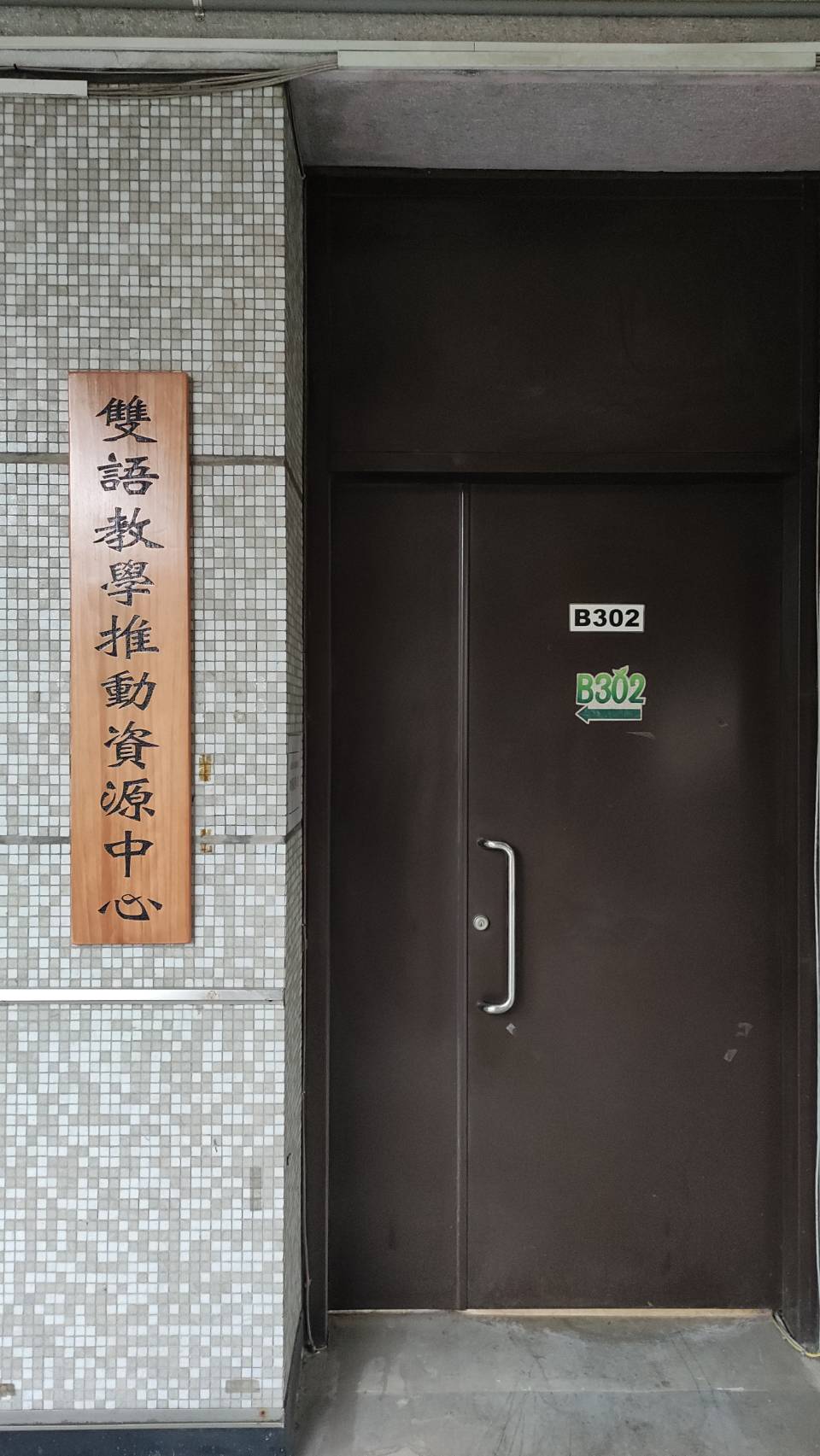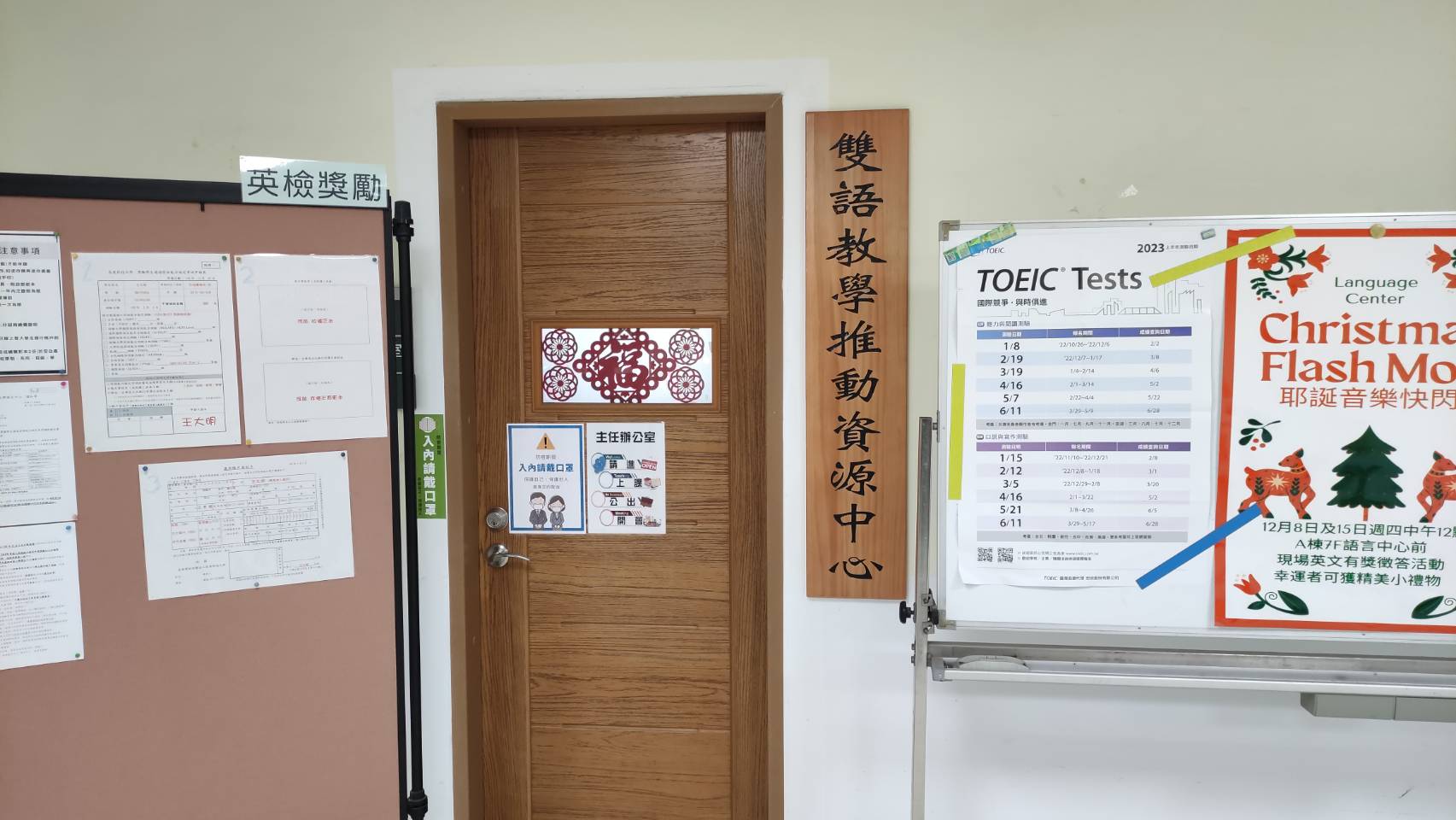Abstract
(1)An Overview of the Features and Highlights of Our School’s Bilingual Development Program
Our university is one of the primary institutions in the country for cultivating medical personnel, with subjects and related internship credits for certification exams accounting for 60 to 70% of the 128 total credits required for graduation. Many English professional terms are used in medical education, and the students’ workload is heavy. However, with generally poor English abilities and low English confidence, many vocational students need help in courses taught with English as a medium of instruction (EMI). In line with the government’s promotion of the 2030 bilingual national policy blueprint, the “Ten-Fold Training Plan for Bilingual Health Care Personnel” mainly promotes “English as a medium of instruction (EMI)” through a “progressive English teaching approach – student-centered.” As a first step of the plan, the Bilingual Teaching Promotion Resource Center was established as the responsible unit to work in conjunction with the Higher Education Deep Ploughing Project and the school development plan. Some instructors have expressed anxiety about teaching courses completely in English. To relieve that anxiety, they are encouraged to apply for hour-based English teaching. With hour-based English teaching, an instructor first teaches an 18-week course with only 1 to 3 weeks of English-only instruction. Gradually, year by year, as the instructor teaches the course, the number of EMI weeks increases until the full standard of a completely EMI course is reached. The English courses for first-year students have been adjusted from 2 credits for 2 class hours across all English levels, to 2 credits for 2, 3, or 4 class hours, the higher number of hours being for students with lower English proficiency levels who need more hours to strengthen their listening, speaking, reading, and writing skills. At the same time, both the Linkou and Chia-Yi campuses are gradually building a bilingual campus environment. Our school expects the number of students taking EMI courses to increase ten-fold in the next 10 years as the school realizes the vision of cultivating bilingual healthcare personnel. The following section outlines the implementation status of two main aspects of EMI implementation: “Measures to Improve Students’ English Ability” and “Measures for the On-Campus Construction of the EMI Support and Resource System.”
Measures to Improve Students’ English Ability:
The target-group of these measures is first-year college students. The students’ scores on a TOEIC-based test are used as the standard for English-class placement into an English course suitable for their ability (Class A, B, or C). The English course credits for first-year students in the 111 (2022-2023) academic year are 2 credits for 2, 3, or 4 instruction hours. The higher numbers of instruction hours are for lower-level English students who require more instruction to improve their listening, speaking, reading, and writing. First-year students’ English learning effectiveness is tested at the end of the academic year. A course platform and learning plan for listening, speaking, reading, and writing has been established to encourage self-study. The language center provides oral and written English-ability diagnosis and counseling to help students solve learning difficulties. After-class counseling mechanisms have been set up for struggling students, with teaching assistants aiding in individual or small-group counseling. Different ratios of English-only teaching are used based on students’ English levels. English teachers and professional-department instructors offer all-English ESP/EAP (English for Specific Purposes/English for Academic Purposes) courses to improve students’ professional English abilities.
Measures for the On-Campus Construction of the EMI Support and Resource System
These measures include:
- The establishment of a bilingual education promotion resource center and the holding of departmental meetings in September 2021.
- The December 2021 completion of a questionnaire-based survey of students and teachers regarding English-only instruction, and the adjustment of strategies according to analysis of the questionnaire results.
- The establishment of a bilingual teaching-center platform for the dissemination of EMI course-related information.
- Providing 3 EMI training courses to train 36 EMI teachers.
- Holding 3 English-speaking related courses.
- Offering 6 EMI courses and 10 hour-based English courses, and rewarding the teachers who passed English-related certification and proficiency tests.
- The calculation of EMI course credits at 1.5 times regular course credits in the teaching-improvement rewards calculation.
- Increasing hour-based English courses in which 2 instruction hours count as 1 unit, with a reward of NT$3,300 per unit, capped at three units.
- Allowing teachers who adopt English innovative or situational teaching to apply for “Rewards for Regular Teachers’ Promotion of Practical Teaching and Production of Teaching Materials and Teaching Equipment.”
- Setting up 2 English Corners or Writing Centers at the Linkou Main Campus and 1 in the Chiayi Branch.
- Promoting overseas study programs for students (though due to the epidemic, these programs had to be suspended).
There are five leading performance indicators for the 2021-2025 project. The project achieved all the indicators for the 2021 academic year. They are as follows:
- English-only courses accounted for 30% of all English classes. (The target was 30%.)
- The number of sophomores and first-year graduate students taking English-only (EMI) courses reached 5.85%. (The target was 1.5%.)
- The number of students who raised their English proficiency by one level since entering the school reached 15.51%. (The target was 2%.)
- A total of 6 EMI courses were offered at the school, comprising 1.2% of the undergraduate courses. (The target was 1.2%.)
- A total of 36 teachers completed EMI training. (The target was 35.)
This project aims to gradually improve the English abilities of healthcare students and international competitiveness in talent cultivation.
(2) Our School’s Self-Evaluation Method
To ensure the effectiveness of the implementation of this project, our school typically assesses the progress using the 4-step PDCA (Plan, Do, Check, and Act) cycle to continuously improve the process of promoting EMI. A summary is as follows:
- Plan (P): The Academic Vice-President, who is also the Project Manager and the Director of the Bilingual Teaching Resource Center, holds an expository meeting to explain the implementation strategy and 5-year targets of EMI teaching, allowing all departments, colleges, and administrative units to fully understand the content and expected goals of the EMI project.
- Do (D): During the initial implementation stage, the Bilingual Teaching Resource Center primarily operates in a top-down manner. Its tasks include planning EMI teacher training, making an inventory of resources, providing assistance from the Office of Academic Research to survey students’ and teachers’ opinions and suggestions on promoting EMI teaching, offering information on the English proficiency of all students in the school, and providing the results of its information-gathering to the departments, colleges, and administrative units for reference.
- Check (C): During the implementation process, departments, colleges, and administrative units report any difficulties in implementation to the Bilingual Teaching Resource Center, such as students being unable to complete the TOEIC post-test during the epidemic. They also provide input regarding how to ensure the quality of EMI courses, how to improve teacher training and the reward measures for EMI training, and so on. In order to effectively adjust the practices, the director puts forward improvement measures or revised regulations at the weekly meeting of the executives to promote EMI teaching. The results thus far have been encouraging, and they generally quickly solve cross-teaching and cross-administrative communication problems. The Teaching Resources Center also invites students for interviews to help the center understand how the process is progressing from students’ perspectives and hear their suggestions on EMI promotion.
- Action (A): The approach is revised based on the improvement measures proposed in Check (C). The programs are all undergoing promotion as scheduled, except for arranging overseas learning for students. This could not be done due to the pandemic’s threat to the health and safety of teachers and students.
- In addition, Professor Shuo-Kuei Zhou, an external commissioner, was hired to provide suggestions for the school’s EMI implementation strategy and promotion. The EMI courses should focus on students’ future professional needs and proceed in conjunction with professional teachers from small units to the entire course. The evaluation of teaching materials and learning outcomes should align with students’ characteristics.
- In addition to the management of the related data for the plan incorporated into our school’s administrative research database, more empirical data will be accumulated through learning outcome sampling and big data analysis to show the maximum implementation effect of this plan.

